InterCora has already been in the market for 30 years
Companies and business in general are thriving in the West Bohemian metropolis of Pilsen with its population of just over 181,000 people. Apart from the local breweries that export the golden nectar to almost the whole world, there are other companies with a long tradition that are competitive even beyond the borders of the Czech Republic.
 With regard to the development field, these undoubtedly also include the Czech-Bavarian company InterCora, which builds and rents commercial real estate for retail, and has recently celebrated their 30th founding anniversary. During this period, they built over 100 shopping centres with a total area of over 2 million sq m, some of which they manage and operate.
With regard to the development field, these undoubtedly also include the Czech-Bavarian company InterCora, which builds and rents commercial real estate for retail, and has recently celebrated their 30th founding anniversary. During this period, they built over 100 shopping centres with a total area of over 2 million sq m, some of which they manage and operate.
Restored shopping centre
And what did such a decadal anniversary celebration look like? On Thursday, 9th November, InterCora festively presented the new look of the Alice shopping centre in the Skvrňany district of Pilsen. The entire project corresponds with current trends and meets the strict ecological criteria imposed on new buildings. The shopping centre was built on the site of the former Jednota housing estate building from the 80s. The whole construction of the Alice shopping centre was very fast. Demolition works started only this January – Penny Market closed on 4th January, 2023.
 The new centre with an area of 2,500 sq m was inaugurated by representatives of the developer and companies collaborating on the construction as well as the current tenants. At the beginning, both owners of InterCora thanked everyone who participated in the company’s success – employees and business partners, as well as city administrations.
The new centre with an area of 2,500 sq m was inaugurated by representatives of the developer and companies collaborating on the construction as well as the current tenants. At the beginning, both owners of InterCora thanked everyone who participated in the company’s success – employees and business partners, as well as city administrations.
 Ing. Ivan Hlaváček, who makes up, together with Dr. Günther Zembsch, the tandem of owners of the InterCora Group, told Development News: “We managed to establish an internal strategy – to demolish buildings that are not functional and are energetically disadvantageous. We decided that building a brand-new building was better than rebuilding or renovating and trying to bring in improvements.” That it was the right decision was stated by the Mayor of the municipal district of Plzeň 3, Mgr. David Procházka, who praised the good cooperation between the developer and the city on the project. Ing. Ivan Hlaváček subsequently added that the area around the building still awaits final completion: “Collaboration with the city of Pilsen proves a very good cooperation, as we left the adjacent plots to the city, but brought them into a state when they are prepared for a completion of a park, which is to be opened next year.”
Ing. Ivan Hlaváček, who makes up, together with Dr. Günther Zembsch, the tandem of owners of the InterCora Group, told Development News: “We managed to establish an internal strategy – to demolish buildings that are not functional and are energetically disadvantageous. We decided that building a brand-new building was better than rebuilding or renovating and trying to bring in improvements.” That it was the right decision was stated by the Mayor of the municipal district of Plzeň 3, Mgr. David Procházka, who praised the good cooperation between the developer and the city on the project. Ing. Ivan Hlaváček subsequently added that the area around the building still awaits final completion: “Collaboration with the city of Pilsen proves a very good cooperation, as we left the adjacent plots to the city, but brought them into a state when they are prepared for a completion of a park, which is to be opened next year.”
The main tenant – the Penny Market store and the MÚÚÚ butcher’s shop – were retained in the new shopping centre. The original tenants were then joined by TEDI, Pepco, SUPER ZOO, Devětsil pharmacy and TABAKRA tobacco.
The celebrations included a conference and a theatre performance
 After the inauguration of the new centre, the guests moved to the Vienna House Easy Plzeň hotel for a conference which InterCora has recently been organizing on annual basis, this time held under the auspices of the Mayor of Pilsen, Mgr. Roman Zarzycký. This year’s main topic was entitled Transformation of a Trader in the Age of Data. The engaging introductory presentation was delivered by Dr. Günther Zembsch, who has been involved in the field of development for over 40 years, and also acts as an analyst and a successful visionary of new concepts. The conference culminated in an economic analysis presented by Ing. Miroslav Singer, former Governor of the Czech National Bank.
After the inauguration of the new centre, the guests moved to the Vienna House Easy Plzeň hotel for a conference which InterCora has recently been organizing on annual basis, this time held under the auspices of the Mayor of Pilsen, Mgr. Roman Zarzycký. This year’s main topic was entitled Transformation of a Trader in the Age of Data. The engaging introductory presentation was delivered by Dr. Günther Zembsch, who has been involved in the field of development for over 40 years, and also acts as an analyst and a successful visionary of new concepts. The conference culminated in an economic analysis presented by Ing. Miroslav Singer, former Governor of the Czech National Bank.
However, the celebrations did not end with the conclusion of the official part of the conference; they continued with an evening cultural programme held at the New Stage of the Josef Kajetán Tyl Theatre, providing the guests with the opportunity to watch the musical Candide by Leonard Bernstein.
Arnošt Wagner, Photo: Author and InterCora’s archive

We asked both CEOs of InterCora:
What did you, as investors, consider to be the biggest obstacle in the implementing of the project?
Answered by Dr. Günther Zembsch: Definitely the location of the object, including parking spaces in the existing residential development, so, it was necessary to take into account the issues of the surrounding area. On the one hand, in terms of the number of parking spaces, and at the same time, it was necessary to create a cultural environment in the middle of a localized zone with an area of 2.500 m², where a new city park should be created. This will naturally connect to retail and a restaurant, which should transition into a park with a children’s playground and another network of urban fixtures and fittings, benches, etc. So, there will gradually be a nice living area for the residents there.
What was the main reason when considering whether to reconstruct the original building or demolish it and build a completely new shopping centre?
Answered by Ing. Ivan Hlaváček: It was decided mainly on account of economic aspects and calculations. We drew up a proposal with a building and zoning permit. Of course, we carefully considered and compared various options. In the end, we came to the conclusion that the complete demolition of the building, which was eventually done, and the construction of a completely new centre was a more economical and time-efficient option than pursuing some kind of revitalization, which would have involved a number of compromises – and the new Alice centre would still not have reached the required standard. The economy of the new operation is multiply better than it would have been with the best possible effort to revitalize the original building. So, this great advantage was preceded by the right decision.




 The company specializes in financing investment needs in the field of machinery, equipment, technology, vehicles and real estate. The company employs specialists in financing aircraft, locomotives and other specific commodities. It offers a wide range of services to small entrepreneurs, businesses and corporate clients. For private individuals, the company finances cars and commercial vehicles. Alois Lanegger, former executive Managing Director of Raiffeisen – Leasing, answered Development News’ questions.
The company specializes in financing investment needs in the field of machinery, equipment, technology, vehicles and real estate. The company employs specialists in financing aircraft, locomotives and other specific commodities. It offers a wide range of services to small entrepreneurs, businesses and corporate clients. For private individuals, the company finances cars and commercial vehicles. Alois Lanegger, former executive Managing Director of Raiffeisen – Leasing, answered Development News’ questions.
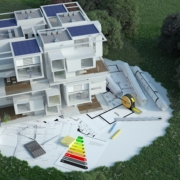
 Printed documents still lead
Printed documents still lead

 When we founded Urbanity Group, we set ourselves a goal to try and move industrial development forward so that it is once again desired and sought after by the public. For instance, for a very long time, we often heard objections and resentment that we only create grey boxes occupying arable land, which only differ from one other by some coloured strip under the attic referring to the developer’s logo. People don’t like such an impersonal concept, and neither do we. We decided that we should return architecture and design into industrial development and prioritize the comfort of its users.
When we founded Urbanity Group, we set ourselves a goal to try and move industrial development forward so that it is once again desired and sought after by the public. For instance, for a very long time, we often heard objections and resentment that we only create grey boxes occupying arable land, which only differ from one other by some coloured strip under the attic referring to the developer’s logo. People don’t like such an impersonal concept, and neither do we. We decided that we should return architecture and design into industrial development and prioritize the comfort of its users.  What can this represent for the particular location?
What can this represent for the particular location?  You are currently preparing a revitalization of the industrial area in Bruntál, which is 300 m from the bus and train stations. So, it is perfectly accessible as it is not somewhere in the middle of a field. The campus will become part of the city. Can you reveal anything more specific?
You are currently preparing a revitalization of the industrial area in Bruntál, which is 300 m from the bus and train stations. So, it is perfectly accessible as it is not somewhere in the middle of a field. The campus will become part of the city. Can you reveal anything more specific?  Yes, we do. This can be seen, for instance, in the cooperation on a new traffic solution for the access road. The existing access road has, for more than 50 years, led rather ineptly through a villa residential area. We signed a cooperative agreement with the city claiming that we will build a new driveway, which will quieten down the residential area. The new transport solution will also better follow in the emerging urban ring road of Bruntál, which is fully under the responsibility of the city management. The city management has been working on the ring road intensively for many years. Today, they already have a building permit and should commence the implementation next year. As part of the new campus transport solution, we will also build a new bus stop, which will be right at the entrance to the campus. This will further improve the already very good accessibility of the area. In general, I would say that cooperation with the council is very constructive and effective. We were able to identify problems and find their solutions together, which is very important.
Yes, we do. This can be seen, for instance, in the cooperation on a new traffic solution for the access road. The existing access road has, for more than 50 years, led rather ineptly through a villa residential area. We signed a cooperative agreement with the city claiming that we will build a new driveway, which will quieten down the residential area. The new transport solution will also better follow in the emerging urban ring road of Bruntál, which is fully under the responsibility of the city management. The city management has been working on the ring road intensively for many years. Today, they already have a building permit and should commence the implementation next year. As part of the new campus transport solution, we will also build a new bus stop, which will be right at the entrance to the campus. This will further improve the already very good accessibility of the area. In general, I would say that cooperation with the council is very constructive and effective. We were able to identify problems and find their solutions together, which is very important. 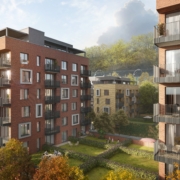
 Shikun & Binui (Housing & Construction) was founded in 1924. It is traded on the Israeli Stock Exchange and has numerous activities in the field of residential construction, energy infrastructure and transport constructions all over the world, including Africa, and North and South America. “Here, in the Czech Republic, we mainly focus on residential buildings, and over the past 21 years, we have managed to complete around 2,000 apartments. We have similar activities in Warsaw, Bucharest and Belgrade,” says the company’s CEO, Yishay Furman. We asked him more questions.
Shikun & Binui (Housing & Construction) was founded in 1924. It is traded on the Israeli Stock Exchange and has numerous activities in the field of residential construction, energy infrastructure and transport constructions all over the world, including Africa, and North and South America. “Here, in the Czech Republic, we mainly focus on residential buildings, and over the past 21 years, we have managed to complete around 2,000 apartments. We have similar activities in Warsaw, Bucharest and Belgrade,” says the company’s CEO, Yishay Furman. We asked him more questions. One of our largest projects is located in Statenice. First phase of Aura Statenice comprises of 79 spacious villas (around 300 sq m) with plots of around 1,000 sq m is now on sale. We are waiting for a building permit for the second stage with approximately 600 apartments, which should be launched sometime in early 2025. Recently, we started sale of our new project in Karlín called Blízká. We currently have hundreds of people interested in reservations, with some already being signed. It is an example of a good location, a good standard and a reasonable price, so there is a satisfactory interest even in these uncertain times. We are planning another project in Bohdalec, where we have requested a change in the zoning plan for the construction of 1,500 apartments, which should be one of the largest housing projects in Prague. If everything goes smoothly, we might be able to apply for planning permission in 2026. Then we have a very large plot of land in Chuchle, where we plan around 1,500 apartments, but we are waiting for a change in the zoning plan. The Urbanika project with 170 apartments is located near Strakonická Street and the development area near Smíchov Station. We hope to be able to start building by the middle of 2024. And the last project with 100 apartments, is in Záběhlice, and I assume that we will start building at the beginning of next year.
One of our largest projects is located in Statenice. First phase of Aura Statenice comprises of 79 spacious villas (around 300 sq m) with plots of around 1,000 sq m is now on sale. We are waiting for a building permit for the second stage with approximately 600 apartments, which should be launched sometime in early 2025. Recently, we started sale of our new project in Karlín called Blízká. We currently have hundreds of people interested in reservations, with some already being signed. It is an example of a good location, a good standard and a reasonable price, so there is a satisfactory interest even in these uncertain times. We are planning another project in Bohdalec, where we have requested a change in the zoning plan for the construction of 1,500 apartments, which should be one of the largest housing projects in Prague. If everything goes smoothly, we might be able to apply for planning permission in 2026. Then we have a very large plot of land in Chuchle, where we plan around 1,500 apartments, but we are waiting for a change in the zoning plan. The Urbanika project with 170 apartments is located near Strakonická Street and the development area near Smíchov Station. We hope to be able to start building by the middle of 2024. And the last project with 100 apartments, is in Záběhlice, and I assume that we will start building at the beginning of next year.  Next year, we will have 1,200 units in preparation in five projects and in the near future, we will have total of 3,870 units in preparation. In the last two years of the crisis, we have been trying to prepare projects in such a way that – as soon as the crisis passes, the banks lower the interest rate and mortgages become more available – we can put them onto the market. So, if everything goes smoothly, we should start the mentioned projects in 2024.
Next year, we will have 1,200 units in preparation in five projects and in the near future, we will have total of 3,870 units in preparation. In the last two years of the crisis, we have been trying to prepare projects in such a way that – as soon as the crisis passes, the banks lower the interest rate and mortgages become more available – we can put them onto the market. So, if everything goes smoothly, we should start the mentioned projects in 2024.  All of our planned projects, which I talked about in the previous answer, will undergo BREEAM sustainable construction certification, which is more common for residential construction. The point is not for the projects to be only ‘green’, but also to be connected to the community. So, it is also about their surroundings in order to make living more pleasant not only for our residents and tenants, but for neighbours and other people as well by, soft landscaping, for instance. In Aura Statenice, every villa includes a heat pump. It is a fairly high initial investment, but we believe that it is an investment in the future and that it will pay off for homeowners. I assume that within 10–15 years, all residential projects will be sustainable. It will be like offices, where it became part of the standard; 20 years ago, we considered it unnecessary. And it will go the same for apartments.
All of our planned projects, which I talked about in the previous answer, will undergo BREEAM sustainable construction certification, which is more common for residential construction. The point is not for the projects to be only ‘green’, but also to be connected to the community. So, it is also about their surroundings in order to make living more pleasant not only for our residents and tenants, but for neighbours and other people as well by, soft landscaping, for instance. In Aura Statenice, every villa includes a heat pump. It is a fairly high initial investment, but we believe that it is an investment in the future and that it will pay off for homeowners. I assume that within 10–15 years, all residential projects will be sustainable. It will be like offices, where it became part of the standard; 20 years ago, we considered it unnecessary. And it will go the same for apartments. 

 Green Center focuses on integrating advanced technologies in its projects, which include license plate recognition systems and navigation systems for efficient guidance to available parking spaces, all with the aim of optimizing user experience while also promoting sustainable development in urban areas.
Green Center focuses on integrating advanced technologies in its projects, which include license plate recognition systems and navigation systems for efficient guidance to available parking spaces, all with the aim of optimizing user experience while also promoting sustainable development in urban areas.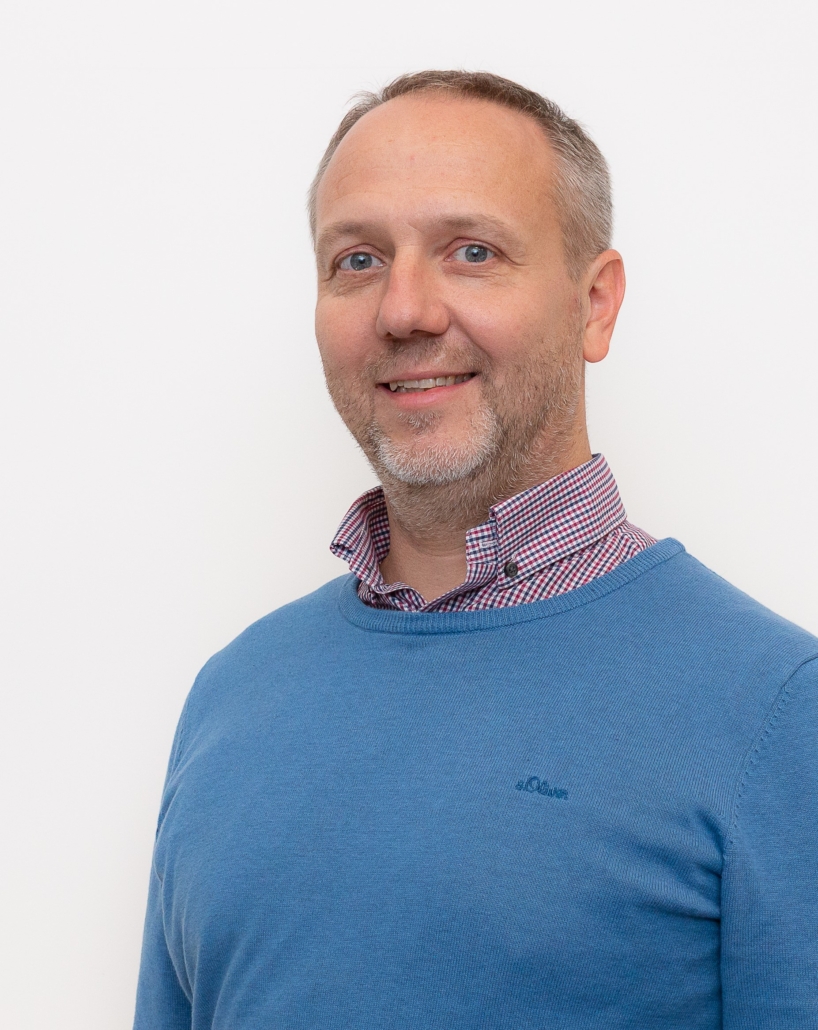 P+R parking house in Mladá Boleslav
P+R parking house in Mladá Boleslav
 Eduard Forejt, who has been working at Passerinvest Group since 2018 and is the Director of Business Development, spoke with us about the current situation in the real estate market and the company’s plans.
Eduard Forejt, who has been working at Passerinvest Group since 2018 and is the Director of Business Development, spoke with us about the current situation in the real estate market and the company’s plans. And what is actually new in Passerinvest?
And what is actually new in Passerinvest? And the other one?
And the other one?  So, Brumlovka can serve as a manual of city-forming elements…
So, Brumlovka can serve as a manual of city-forming elements…  Sorry, you said revitalization, don’t you mean recycling?
Sorry, you said revitalization, don’t you mean recycling?  Is there anything that currently surprises you or catches you unawares during construction?
Is there anything that currently surprises you or catches you unawares during construction?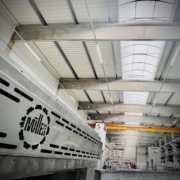
 Visual comfort goes hand in hand with ‘non-invasive’ lighting control, without the need for complex reconstructions. It can be achieved by a simple installation of lights with wireless control and utilization of natural sunlight in the building during the day. Commercial buildings are usually more than 50% glazed. Employees don’t need to worry about setting the lighting intensity withing the working area. Everything is done on their behalf by a wireless lighting control system, which is additionally installed without the need for cabling with illuminance sensors and presence monitoring at the workplace.
Visual comfort goes hand in hand with ‘non-invasive’ lighting control, without the need for complex reconstructions. It can be achieved by a simple installation of lights with wireless control and utilization of natural sunlight in the building during the day. Commercial buildings are usually more than 50% glazed. Employees don’t need to worry about setting the lighting intensity withing the working area. Everything is done on their behalf by a wireless lighting control system, which is additionally installed without the need for cabling with illuminance sensors and presence monitoring at the workplace.  Example No. 1: Donaldson Filtration Solutions offices, Kadaň
Example No. 1: Donaldson Filtration Solutions offices, Kadaň Example No. 2: Control room of the hydroelectrical power station Střekov – ČEZ Renewable resources:
Example No. 2: Control room of the hydroelectrical power station Střekov – ČEZ Renewable resources:  Example No. 3: Production premises of Jakob Müller AG – Czech Republic
Example No. 3: Production premises of Jakob Müller AG – Czech Republic 
 What is also important is the functionality for the end user; a recent study states that 33% of office workers said that they would like to adjust their ceiling and desk lighting to the level of incoming daylight. Giving workers individual control over lighting, which is also required by green building certification schemes such as LEED and BREEAM, can easily be achieved by installing the wireless Synergis Light_Control in all, even already existing buildings.
What is also important is the functionality for the end user; a recent study states that 33% of office workers said that they would like to adjust their ceiling and desk lighting to the level of incoming daylight. Giving workers individual control over lighting, which is also required by green building certification schemes such as LEED and BREEAM, can easily be achieved by installing the wireless Synergis Light_Control in all, even already existing buildings. 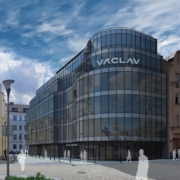
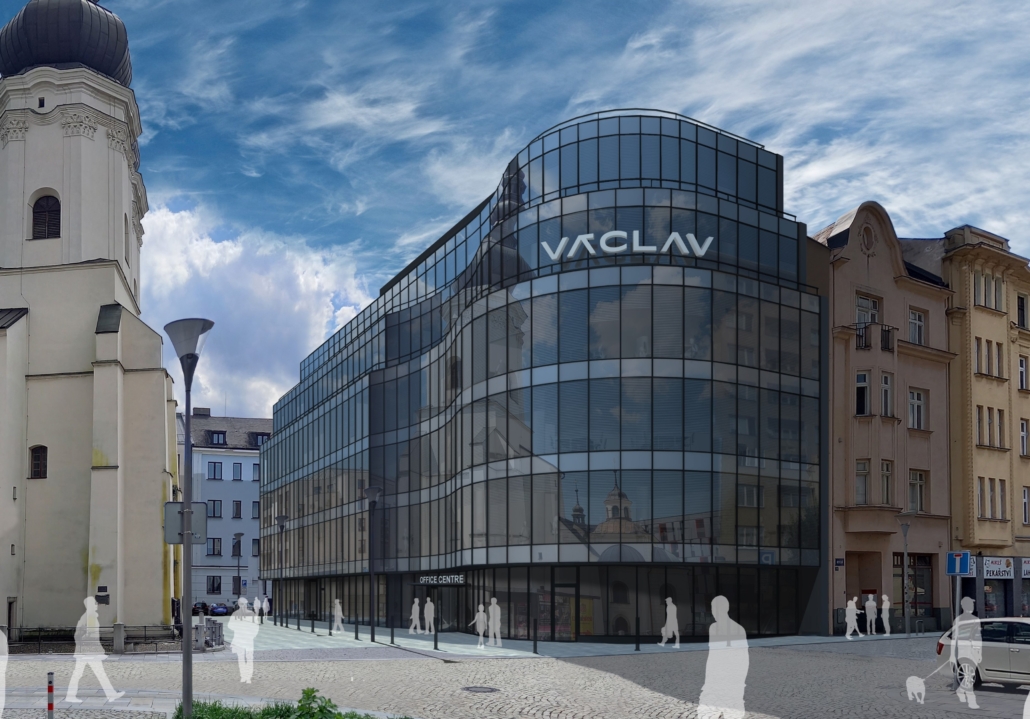 Continued revitalisation of the Ostrava centre
Continued revitalisation of the Ostrava centre
 IoT helps savings and efficiency
IoT helps savings and efficiency  The following business case from a retail area can document the use of IoT in practice. The customer manages an extensive network of branches and was looking for an efficient and comprehensive solution for the supervision and control of their operations. The main challenges were to monitor the quality of goods storage and energy consumption in individual branches, measure the temperature within the area in order to optimize heating (and thus reduce costs), centralize the control of light advertising in order to eliminate unnecessary waste, and at the same time increase user comfort. The aim was to ensure that all branches are managed centrally and in real-time, which would lead to better control over the operations, cost savings and overall efficiency gains.
The following business case from a retail area can document the use of IoT in practice. The customer manages an extensive network of branches and was looking for an efficient and comprehensive solution for the supervision and control of their operations. The main challenges were to monitor the quality of goods storage and energy consumption in individual branches, measure the temperature within the area in order to optimize heating (and thus reduce costs), centralize the control of light advertising in order to eliminate unnecessary waste, and at the same time increase user comfort. The aim was to ensure that all branches are managed centrally and in real-time, which would lead to better control over the operations, cost savings and overall efficiency gains. 